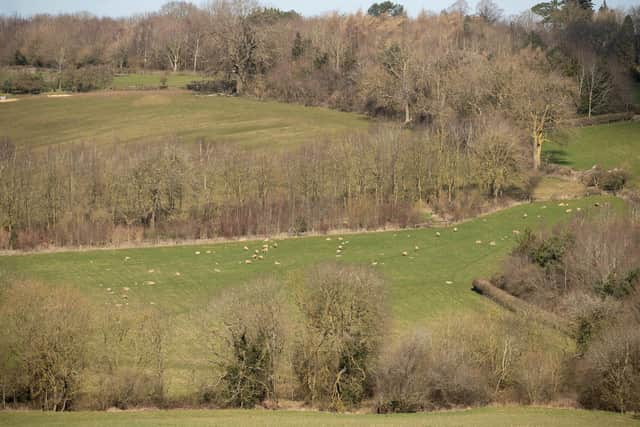Farmland across England and Wales continues to demonstrate resilience as values grow for seventh quarter
and live on Freeview channel 276
The seventh consecutive quarter of growth saw arable land across England and Wales reach £9,233/acre, an increase of 1.3 per cent since Q3 the same year, according to national property consultancy Carter Jonas.
Pasture values increased at a slightly slower rate of 0.3 per cent, averaging £7,472/acre.Carter Jonas Head of Farm Agency, Andrew Chandler, commented: “Year-on-year growth has been decelerating since the start of the year, but still continues to climb at a moderate pace.
Advertisement
Advertisement
“When compared to Q4 2021, average arable land values have increased by 4.5 per cent and average pasture values by 4.3 per cent.


“Longer-term growth remains strong across all types of land. When annualised over a 10-year period, arable land has increased at a rate of 2.8 per cent and pasture has grown by 3.5 per cent.”
Prime land continues to be highly sought after; year-on-year prime arable values have risen by 6.1 per cent, reaching an average of £10,961/acre across England and Wales.
“Prime arable land values continue to be bolstered by demand for quality domestic food production, arising from an expanding awareness around sustainability, health and nutrition,” Mr Chandler added.
Advertisement
Advertisement
Natural capital investors have driven lesser quality hill and upland values up substantially, rising by 23 per cent in the 12 months to Q4 2022.
Average lifestyle land values also saw significant growth, rising by five per cent to reach £15,792 –the highest level ever recorded by Carter Jonas.Mr Chandler explained: “A robust 10-year annualised growth rate of 4.4 per cent for lifestyle land has been driven predominantly by substantial growth in the South East and West Midlands, with these regions seeing 10-year annualised growth rates of 7.3 per cent and 7.4 per cent respectively.”
Although supply is below longer-term averages, there were 10,435 acres of newly available land to the market in the final quarter of 2022 – an increase of 16 per cent from the third quarter.
“Historically, low levels of available land coupled with a growing range of purchasers has helped to maintain pressure on agricultural land values across England and Wales,” Mr Chandler stated.
Advertisement
Advertisement
“Debate continues to intensify about how to balance the dichotomy of land being taken out of food production for environmental purposes and a need for domestic production.
“Over the coming year, this will serve to keep the agricultural land market tight, with innovation and bringing land back into production from other non-agricultural uses increasingly necessary in the medium term.”
The rise in interest rates and subsequent surge in the cost of finance will pose a challenge to the market over the coming months, but Mr Chandler is optimistic that land values will remain strong.
“Businesses and individuals have become less inclined to borrow across all property asset types and those with debt will experience decreased liquidity,” he explains. “Yet, the prominence of cash buyers and rollover funds in the market is likely to mean that land values are less exposed to increasingly expensive debt,” he said.